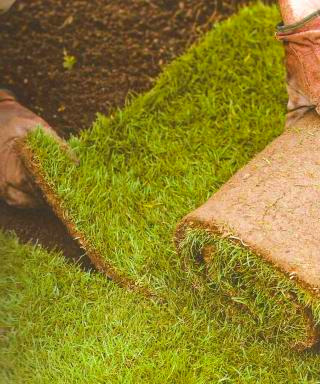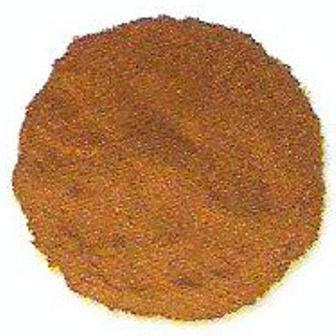|
Starting Organic Lawns and Caring for ThemOrganic lawns are based entirely on the size of your garden. By that I mean… If your garden is small, you’ll be better off without a lawn. It’ll be too expensive and time consuming to start up the lawn as well as maintain it. So going with gravel or a paved pathway will make a lot more sense. However, an organic lawn is perfect for big gardens. Paving will be too expensive. Plus… You don’t want to pave or add gravel to land that you may one day use as your garden expands. So first think about it and if adding a lawn is feasible… Then here are some quick and easy ways to start and maintain it. Starting a Turf LawnThe fastest way to start a lawn in the garden is by laying a turf.  Turf is actually a lawn that is grown for commercial purposes. That is… someone starts a lawn, divides it into pieces and then sells it off as turf. And since you’re buying the lawn it may be a bit more expensive than buying the seeds and starting from scratch. However…it’s less time consuming and allows faster results. The best time to lay an organic lawn turf is in spring and autumn. These months are wet and damp. And seeing as turf requires a lot of water to prevent drying… It makes perfect sense to take advantage of these seasons. However if these seasons have passed and you still wish to start the turf lawn… …then ensure that you’re always watering the lawn. Here’s Another Point to ConsiderAlthough you’re laying turf…the land still has to be prepared. However the extent of the preparation is far less than what’s required if you were starting from scratch. By preparation I mean… The area has to dug, leveled and enriched. Digging is easy when you’ve got a rotavator. And these can be rented from your local garden store or hardware. Here’s an example of what I mean…
 Finally you should be aware that some turfs comes from old meadowland which may contain weeds. These weeds can be smuggled into your garden. Also the turf may be pretreated with inorganic fertilizer. Starting a Lawn with Natural CoverBy natural cover, we mean…grass that is already growing on the lawn site. And using this grass is a bit slower than laying turf but is less expensive. It’s also more ecologically balanced than introducing new grass to a site. So here’ how it’s done… Simply keep cutting the grass. First cut the grass down to a rough sward. Then continue to cut the grass once a week during late spring to early autumn. This simple process kills off tall weeds leaving behind an attractive lawn. The lawn can then be further assisted by adding…
…at least twice a year. All these organic fertilizers can be located at your local home and garden store. Maintaining Organic Lawns by ScarifyingScarifying simply means scraping the lawn. This is done by simply using a wire rake to scrape the lawn. This does two things…
The best time to scarify your organic lawn is during the spring and autumn seasons. Maintenance by means of CuttingAs stated above… cutting regularly (once a week is ideal) controls weeds. This also produces dead leaves for composting and mulches in the vegetable garden. These clippings can also be used to encourage worms. Worms love feeding on them. During spring the lawn should be cut down to a height of 2-3 cm (that’s 1-1¼ inches). And this height should be maintained until mid summer. Because the spring months are damp months…the issue of drainage arises. But a lawn at this height allows enough water to evaporate. From mid - summer… The height of the lawn grass should be raised to 3-5cm (1¼ to 2 inches). This helps to retain soil moisture in the hot, dry summer months. And in late autumn… Raise the height even further to 5-8cm. This helps to protect the soil for the upcoming old and dry winter months. Protecting An Organic Lawn from LeatherjacketsLeatherjackets are pest that feed on the roots of the lawn grass. You can tell if they are in your lawn if you notice that patches of grass are drying up. So as soon as you see this occurring… You can wet the lawn in the night. Then lay a carpet on the grass. This attracts the leatherjackets up to the surface. In the morning…remove the carpet and expose the leatherjackets. The birds will feast upon them. Or you can sweep them up and dispose of them.
That just about covers the basics of adding a lawn to your vegetable garden. Remember…if your garden is small; don’t bother with organic lawns. You’ll be better off if you use gravel or concrete on pathways. But if the garden is large, the lawn is the wiser choice. It helps maintain and provide cover for soil that may be later used for growing vegetables.
|









